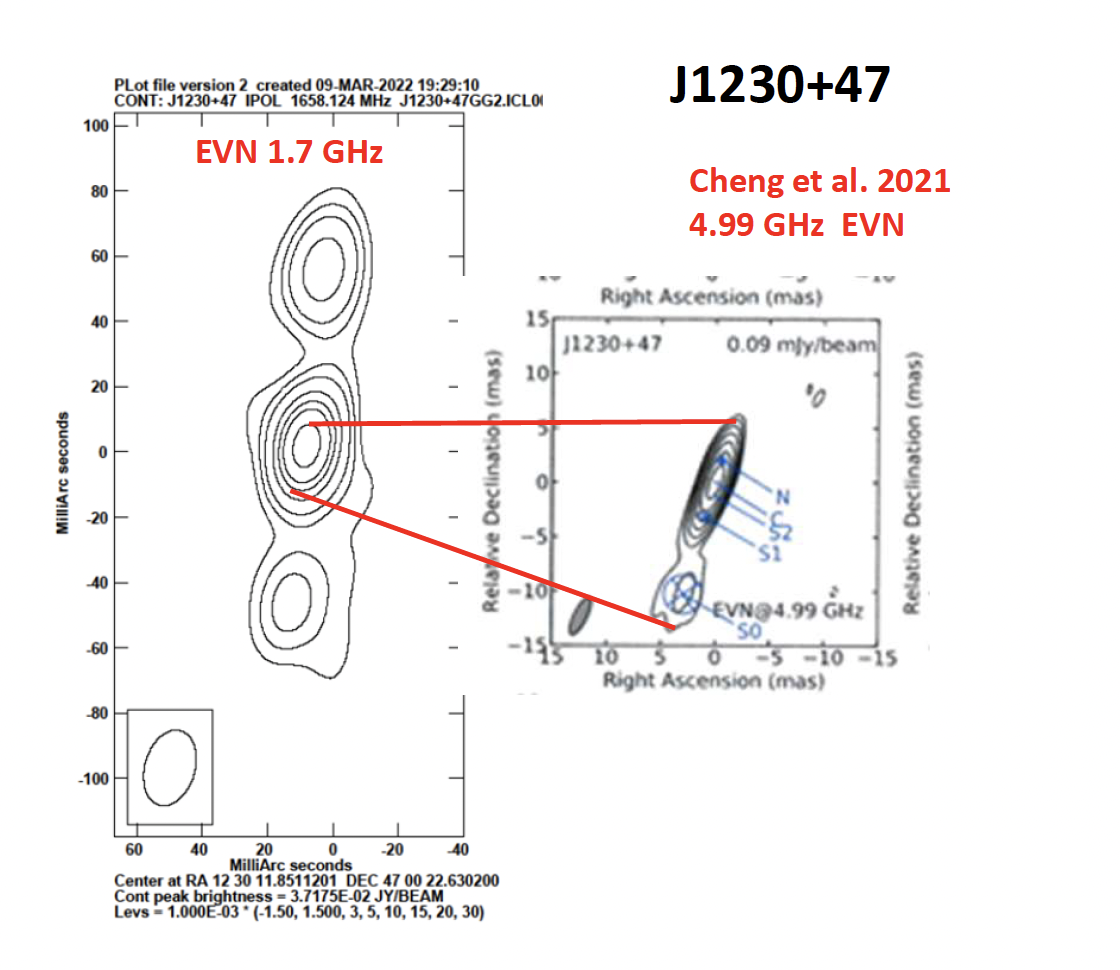
EVN/JIVE Newsletter - Edition 65 May 2023
Welcome to the May 2023 issue of the EVN/JIVE Newsletter.

Observing proposals are invited for the European VLBI Network (EVN). Deadline: 1 June 2023, 16:00:00 UTC. The EVN facility is open to all astronomers. Astronomers with limited or no VLBI experience are particularly encouraged to apply for observing time. Student proposals are judged favorably. Support with proposal preparation, scheduling, correlation, data reduction and analysis can be requested from the Joint Institute for VLBI ERIC (JIVE). Check details of the call for proposals here.
EVN Support+ programme
JIVE/EVN has a pilot programme to provide extended support to teams new to the EVN, with little or no direct VLBI experience. This includes the scheduling of the VLBI run and the VLBI-specific parts of the data reduction (including a-priori amplitude calibration and fringe-fitting). Imaging, and the interpretation of the data is the responsibility of the team. We aim to support some standard VLBI projects, evaluated by the EVN Program Committee with the highest grades. See the call for proposals for more information. For further questions please contact the Chair of the EVN PC, Zsolt Paragi (evnpc@jive.eu).
Radio jet precession in M81*
Sebastiano von Fellenberg

The galaxy M81 is located at a distance of 3.36 ± 0.34 Mpc (Freedman et al. 1994) and its black hole (M81*) belongs to the class of the low-luminosity AGN (LLAGN), as such exhibits relatively weak (intrinsic) radio emission (e.g., Brunthaler et al. (2006)). However, it is the closest LLAGN to Earth and as such has a high apparent luminosity. It can therefore serve as a test-bed to characterize this class of accreting black holes (Markoff et al. 2008). As such it may be the best candidate to bridge the accretion processes between Sgr A* and other LLAGN (GRAVITY Collaboration et al. 2020)..... Read More
Multiscale and multidirectional VLBI imaging with CLEAN
Hendrik Müller

CLEAN introduces a disparity between the recovered model and the final convolved image, its resolution limit is too conservative, the representation of extended emission is suboptimal, CLEAN has spurious regularization properties... Read More
Independent VLBI astrometric results to validate the Gaia results for AR Sco, the only known radio-pulsing white dwarf
Lang Cui

VLBI astrometric observations of radio stars can validate the quality of Gaia Celestial Reference Frame (GCRF) and help to improve the accuracy and robustness of the link between the International Celestial Reference Frame (ICRF) and GCRF.... Read More
Jets in FR0 radio galaxies
Gabriele Giovannini

The local radio-loud Active Galaxy Nuclei (AGN) population is dominated by compact sources named FR0. These sources show features, such as the host galaxy type, the mass of the central supermassive black hole (SMBH), and the multi-band nuclear characteristics, that are similar to those of FRI radio galaxies. However, in the radio band, while FR0 and FRI share the same nuclear properties, the kiloparsec-scale diffuse component dominant in FRI is missing in FR0s.... Read More
Adding uGMRT to EVN observations

The Upgraded Giant Metrewave Radio Telescope (uGMRT) is an interferometric array consisting of 30 dishes of 45 m diameter each, located in the western part of India, providing nearly seamless coverage from 120 MHz to 1460 MHz. The uGMRT is being made available for L-band VLBI observations in concert with the EVN for the 1-June-2023 proposal submission deadline, strictly on a best-effort basis. Proposals requiring the uGMRT as part of their observations should include separate scientific and technical justifications (the latter would be required by NCRA to assess the technical feasibility of the uGMRT observations). Approved EVN proposals involving uGMRT would then be scheduled on a best- effort basis subject to availability of suitable empty slots in the uGMRT schedule...Read More
News from ORP
The Opticon RadioNet Pilot (ORP) is one of the European Commission's "pilot" programmes under the EC H2020, launched in March 2021. This four-year project brings together 37 institutions to support and develop seamless access to radio and optical facilities. Through various processes, ORP brings together radio and optical astronomers to create a stronger community to better exploit the opportunities of multi-wavelength science and benefit from each other's expertise. Find out about latest news of the project... Read More
- CASA VLBI Workshop 2023, Dwingeloo, the Netherlands | 5-9 June 2023
- European VLBI Group for Geodesy and Astrometry (EVGA) 26th Working Meeting, Bad Kötzting, Germany | 12-16 June 2023
- EAS 2023, Krakow, Poland | 10-14 July 2023
- URSI GASS 2023, Sapporo, Japan | 19-26 August 2023
- ALMA at 10 years: Past, Present, and Future, Puerto Varas, Chile | 4-8 December 2023
EVN/JIVE Newsletter Editorial Team: Agnieszka Slowikowska (JIVE Director), Zsolt Paragi (JIVE Head of User Support) and Aukelien van den Poll (JIVE Finance and Project Officer).
For any enquiries about the newsletter, please contact communications@jive.eu.